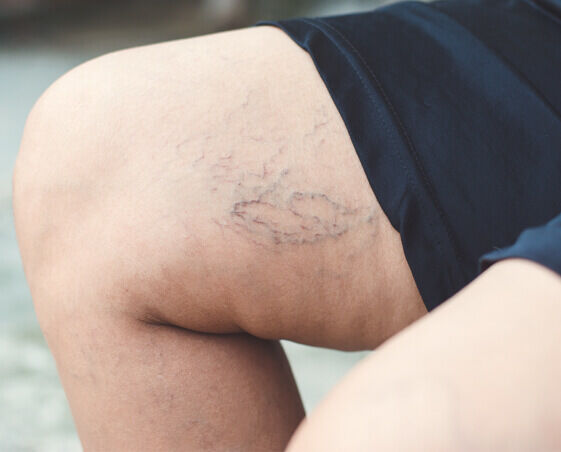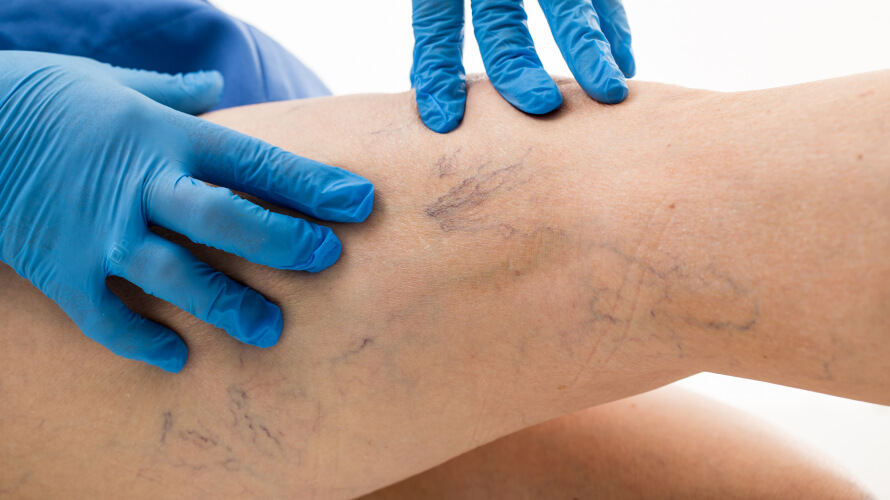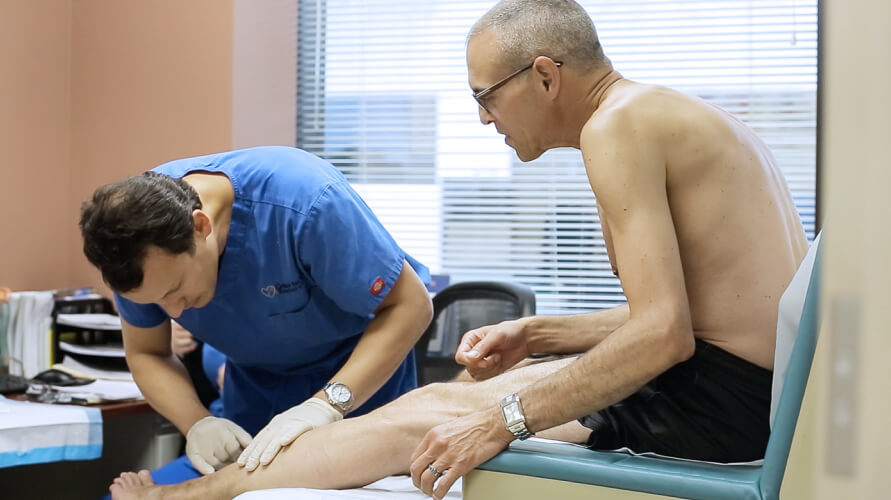Spider Veins: Causes, Symptoms, and Treatment
Imagine a Life Free from Spider Veins and Leg Discomfort
Don't let spider veins disrupt your lifestyle. Relief from the discomfort of spider vein pain and symptoms, including the unsightly weblike networks of blood vessels on the surface of the skin of your leg, is possible. Our expert leg vein solutions are tailored to target and treat leg issues related to problem veins in your legs—helping you regain confidence and comfort. Say goodbye to spider vein pain and hello to restored leg health. Your journey towards healthier, pain-free legs begins today.

What are spider veins?
Spider veins, known as telangiectasias, are small, dilated veins commonly appearing close to the skin's surface. Sometimes referred to as "hidden varicose veins," these small, thread-like markings on your legs can look like little spider webs or tree branches in shades of red, blue, or purple. Spider veins don't bulge as varicose veins do and usually range from 0.5 to 1 millimeter in diameter; spider veins can appear on your face, upper thighs, below the knee joint, and even around your ankles.
Seemingly harmless, spider veins could be accompanied by underlying venous reflux. Venous reflux is a sign of a vein condition called chronic venous insufficiency (CVI). CVI happens when the tiny valves in your leg veins become damaged and can't keep blood moving back toward the heart.
Spider veins can result from various factors, including genetics, hormonal changes, and prolonged periods of sitting or standing, contributing to venous insufficiency (vein disease).
Who gets spider veins?
Spider veins are a common issue affecting individuals of all ages and backgrounds. However, some factors may increase the likelihood of developing them. Genetics plays a significant role, so if your family has a history of spider veins, you might be more prone to developing them. Additionally, a sedentary lifestyle and prolonged sitting can contribute to poor circulation and the formation of spider veins.
To prevent spider veins, consider regular physical activity, maintaining a healthy weight, and avoiding prolonged periods of inactivity.
Do you think you're alone in having spider veins? Nothing is further from the truth! Almost:
- 50 percent of women ages 40 to 50 have spider veins
- 75 percent of women ages 60 to 70 have spider veins
- 25 percent of men age 30 to 40 have spider veins
- 50 percent of men over the age of 70 have spider veins
How are spider veins diagnosed?
Diagnosing spider veins involves a thorough examination by a qualified vein specialist. At Center for Vein Restoration, our experts use advanced diagnostic techniques such as duplex ultrasound to assess the severity of venous insufficiency and tailor a treatment plan accordingly. Our goal is to address the cosmetic aspect of spider veins and improve overall leg vein function.
Tests for spider veins include:
Duplex ultrasound
A type of vascular ultrasound uses high-frequency sound waves to "see and hear" the speed of blood flow and structure of the leg veins. This test is painless and often takes 30 minutes or less to complete. There are no side effects or risks.
Color-flow imaging (also called triplex ultrasound)
This enhanced form of Doppler ultrasound technology uses color to show the direction of blood flow. Different colors are used to designate the direction of blood flow, simplifying the interpretation of the ultrasound results.
Magnetic resonance venography (MRV)
A diagnostic procedure that uses magnetic resonance technology and intravenous (IV) contrast dye to see the veins. An MRV can identify causes of leg pain other than vein problems.

